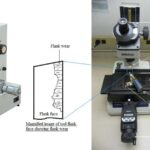Molecular biology 21 Views 1 Answers
Sourav PanLv 9September 18, 2024
Which of the following about Next Generation Sequencing is true? Does not require primers Employs RNA polymerase Individual DNA fragments are amplified on a solid support Is not high throughput Next Generation Sequencing is an alternative term for Sanger sequencing The neurotoxin diisopropylphosphofluoridate (DIPF) binds only to a serine amino acid residue at the active site of acetylcholinesterase to inhibit the enzyme. What type of inhibitor is it? group-specific reactive substrate analog affinity label mechanism-based Suicide
Which of the following about Next Generation Sequencing is true?
Does not require primers
Employs RNA polymerase
Individual DNA fragments are amplified on a solid support Is not high throughput
Next Generation Sequencing is an alternative term for Sanger sequencing
The neurotoxin diisopropylphosphofluoridate (DIPF) binds only to a serine amino acid residue at the active site of acetylcholinesterase to inhibit the enzyme. What type of inhibitor is it?
| group-specific | ||
| reactive substrate analog | ||
| affinity label | ||
| mechanism-based | ||
| Suicide |
Please login to save the post
Please login to submit an answer.
Sourav PanLv 9May 15, 2025
The true statement about Next Generation Sequencing is:
– Individual DNA fragments are amplified on a solid support
Explanation:
- Does not require primers: This is false. NGS methods typically require primers to initiate the sequencing process, although the specifics of primer use can vary between different NGS technologies.
- Employs RNA polymerase: This is false. NGS generally involves DNA polymerases for sequencing DNA, not RNA polymerases. RNA polymerase is used in the process of synthesizing RNA from DNA, which is different from sequencing.
- Individual DNA fragments are amplified on a solid support: This is true. Many NGS technologies involve amplifying individual DNA fragments on a solid support, such as in cluster generation for Illumina sequencing.
- Is not high throughput: This is false. NGS is specifically characterized by its high-throughput capabilities, allowing for the simultaneous sequencing of millions of DNA fragments.
- Next Generation Sequencing is an alternative term for Sanger sequencing: This is false. NGS and Sanger sequencing are distinct technologies. NGS refers to a range of high-throughput sequencing technologies, while Sanger sequencing is a traditional, lower-throughput method.
Neurotoxin Inhibition
The type of inhibitor for diisopropylphosphofluoridate (DIPF) is:
– Group-specific
Explanation:
- Group-specific: DIPF is a group-specific inhibitor because it irreversibly binds to a specific functional group (the serine hydroxyl group) in the active site of acetylcholinesterase, affecting its function.
- Reactive substrate analog: This refers to molecules that mimic the substrate of an enzyme but are not necessarily specific to the functional groups involved in inhibition.
- Affinity label: An affinity label typically binds to a specific site on the enzyme but often in a more targeted manner related to substrate interaction.
- Mechanism-based: Also known as suicide inhibitors, these bind to the enzyme and are converted into a reactive form that inhibits the enzyme. DIPF is not a mechanism-based inhibitor as it does not undergo conversion in this way.
- Suicide: This is another term for mechanism-based inhibition, where the inhibitor itself is converted into a reactive form that binds irreversibly to the enzyme. DIPF does not fit this description precisely.
0
0 likes
- Share on Facebook
- Share on Twitter
- Share on LinkedIn
0 found this helpful out of 0 votes
Helpful: 0%
Helpful: 0%
Was this page helpful?




